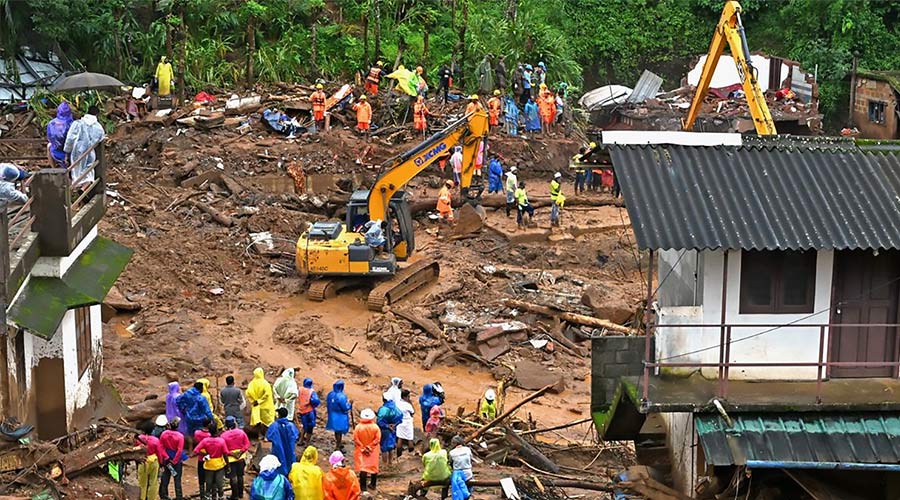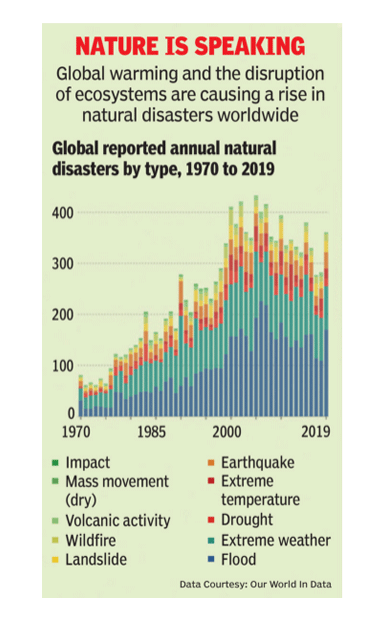
All eyes were on Wayanad, Kerala when the news broke of a devastating landslide that claimed 300+ lives. The root cause was a variety of factors including bad infrastructural management, mining practices and gradual land degradation due to a landslide in 2020.
However, an initial study by the World Weather Attribution network concerning the meteorological conditions revealed that climate change increased the rainfall intensity by 10%.
The Wayanad Catastrophe: A Case Study
In the early hours of July 30, 2024, the district of Wayanad, Kerala, was hit by a series of landslides caused by heavy rainfall. This disaster ranks among the deadliest in Kerala’s history, with reports of over 17 families wiped out, 230 fatalities in total, and more than 119 still unaccounted for as of August 21, 2024.
Deforestation stripped the region of its natural barriers, increasing vulnerability to landslides. The area’s seismic sensitivity amplified the risk, with even minor tremors potentially triggering disasters. Poor building construction, often lacking in adherence to safety standards, exacerbated the damage during this event.
However, global warming intensified the rainfall patterns, contributing to the frequency and severity of landslides, making this factor a major cause among others for the tragic fatalities.
With the many warning signs mentioned above that appeared well ahead of time, little was done to avoid this disaster. The Kerala High Court boldly states it as just another instance of nature reacting to human “apathy and greed”.
However, this is not the only life-threatening flooding incident over the past few months, or even in August alone.
Most of North-west India–with Gujarat at the epicentre of this disaster–was hit with a massive deluge that claimed a few casualties and displaced many residents on August 26, 2024.

On the third week of August, the floods in Tripura led to at least 22 people losing their lives, and a few others are missing due to continued flooding.
Let’s not forget the infamous Mumbai storm that arrived in the most unseasonal fashion, and the one in Jaipur in 2023–another account of the lives lost at the helm of climate change due to global warming.
The realities of these disasters are a constant wake-up call for every Indian citizen to contribute to mitigating climate change’s impact.
What are the chances that the next fatality connected to another climate disaster is you or your family? How long are we going to wait until we realise that more lives will be lost if we don’t take a step towards climate action now?
Continuing down this path without action would only increase the frequency and severity of similar incidents.
Consider it a global warning.

The Role of Solar Energy in Mitigating Climate Change
Currently, 78% of India’s electricity generation still relies on fossil fuels, ranking as the world’s third-largest power sector emitter. Electricity generated by burning fossil fuels is the largest source of greenhouse gases (GHGs).
To beat climate change, we must harness the sun’s power. Each kilowatt-hour (kWh) of solar energy produced can offset a significant amount of carbon dioxide (CO2) that would have been emitted by coal or natural gas power plants.
As more households, businesses, and industries switch to solar energy, the progression of climate change will slowly diminish.

India targets to install 500 gigawatts (GW) of renewable energy capacity, a significant portion of solar power by 2030, which has the potential to reduce the total projected carbon emissions by 1 billion tonnes.
Additionally, India plans to reduce the carbon intensity of its economy by under 45%. This means the amount of CO2 emitted per unit of GDP will be nearly halved, contributing to more sustainable economic growth.
Beyond emission reductions, solar energy helps communities become more resilient to climate change by offering a reliable, renewable energy source.
In climate-related disaster-prone regions, solar energy can provide a stable power supply even when the grid fails. With the addition of battery storage, solar systems can continue to power essential services during outages, ensuring that communities have access to electricity when they need it most. This resilience is vital as extreme weather events become more frequent and severe due to climate change.
SolarSquare: Leading the Charge in Democratising Solar in India
SolarSquare was founded at the heart of reversing the effects of climate change by equipping businesses, housing societies and households with solar solutions. Our mission is to contribute to a cleaner, greener planet one home at a time. By promoting the adoption of solar energy, we aim to reduce the country’s collective carbon footprints and support our national and global climate goals.
Our focus on innovative solutions and customer-centric approaches will help democratise solar power, ensuring that it is not limited to only large corporations but available to every household in India.
Case Studies and Success Stories
One of our notable projects includes installing a large solar system at Maurishka Palace, a housing society in Mangalore. The project contributed to over Rs. 53 lacs in electricity bill savings and significantly decreased their carbon footprint, setting a benchmark for sustainable living in residential areas.
We have also successfully implemented solar solutions in over 16 cities across India, demonstrating our ability to effectively integrate solar in households in urban areas. These projects have showcased the feasibility and benefits of solar power in diverse residential settings.
The Way Forward: A Call to Action
As climate change accelerates, solar energy will be pivotal in reducing carbon emissions and mitigating its impacts. Clearly, solar energy provides a clean, renewable alternative to fossil fuels, helping to retard the progression of climate change and build resilience in communities.
As a community seeking the greater good of our future generations, it’s crucial to consider integrating solar energy into our lives.
Reflecting on the lessons from the Wayanad catastrophe, it is clear that climate change poses a formidable challenge. However, adopting solar solutions provides a tangible path forward. While the scale of the issue can seem overwhelming, every step toward renewable energy contributes to a larger solution. By embracing solar power, we can make meaningful strides toward a more sustainable and resilient future.
With the widespread adoption of solar energy, there is hope for a cleaner, greener planet. Together, we can turn the tide on climate change and build a future where energy is sustainable and accessible for all.


 738 Reads
738 Reads 6 mins
6 mins




.png)


.png)